Pine Trees
Pine trees have always held a special place in my mind. They remind me of some of my best memories growing up – hiking in the forests, camping in the mountains, skiing in the Sierra Nevada mountains, holidays at Lake Tahoe. Huge majestic pine trees everywhere. And Julie immediately saw the magic in them when she started to spend time in California with their tall handsome trunks, defining barks and needles, sweet smell. Pine trees rock.
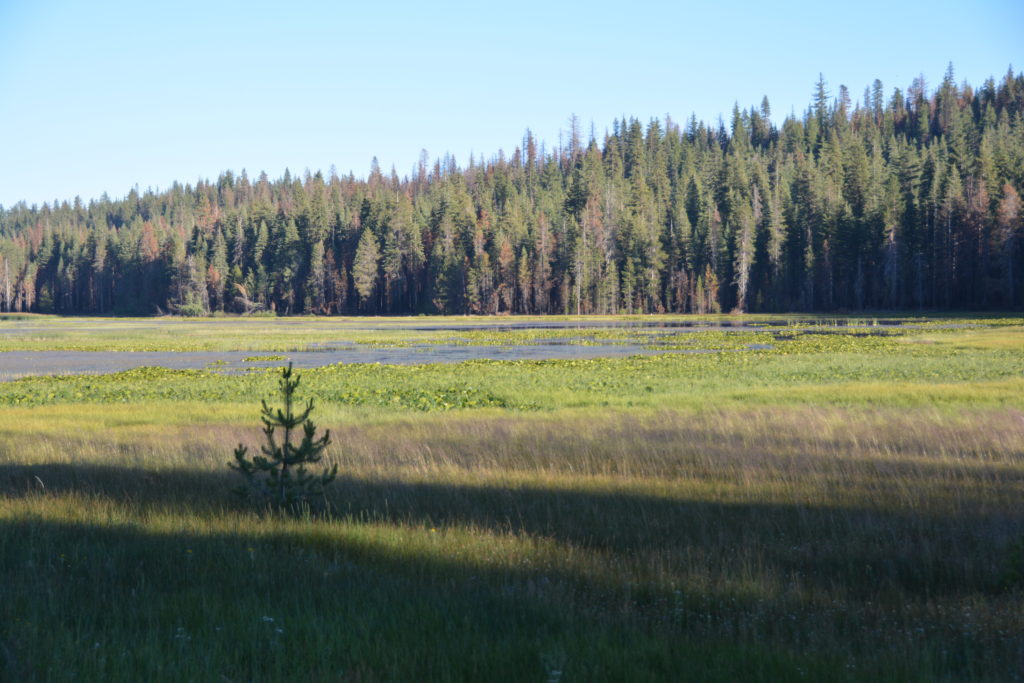
And so it was the most sublime of evenings to be free camping amongst these wonderful towering giants deep in the Tahoe National Forest, not another soul in sight. Pine trees are beautiful, calming, aromatic and home to a variety of birdlife and a million squirrels and chipmunks running this way and that. A fabulous place to spend our first night after twelve wonderful days with our extended family at the family holiday home on Lake Tahoe, of course surrounded by pine trees.
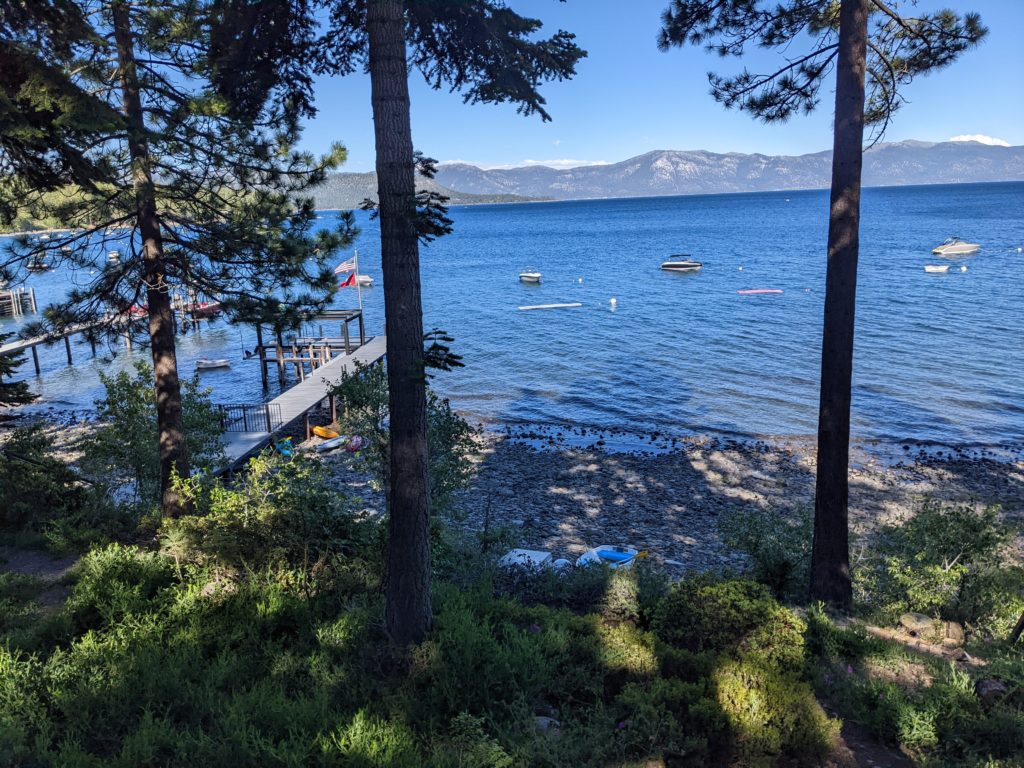
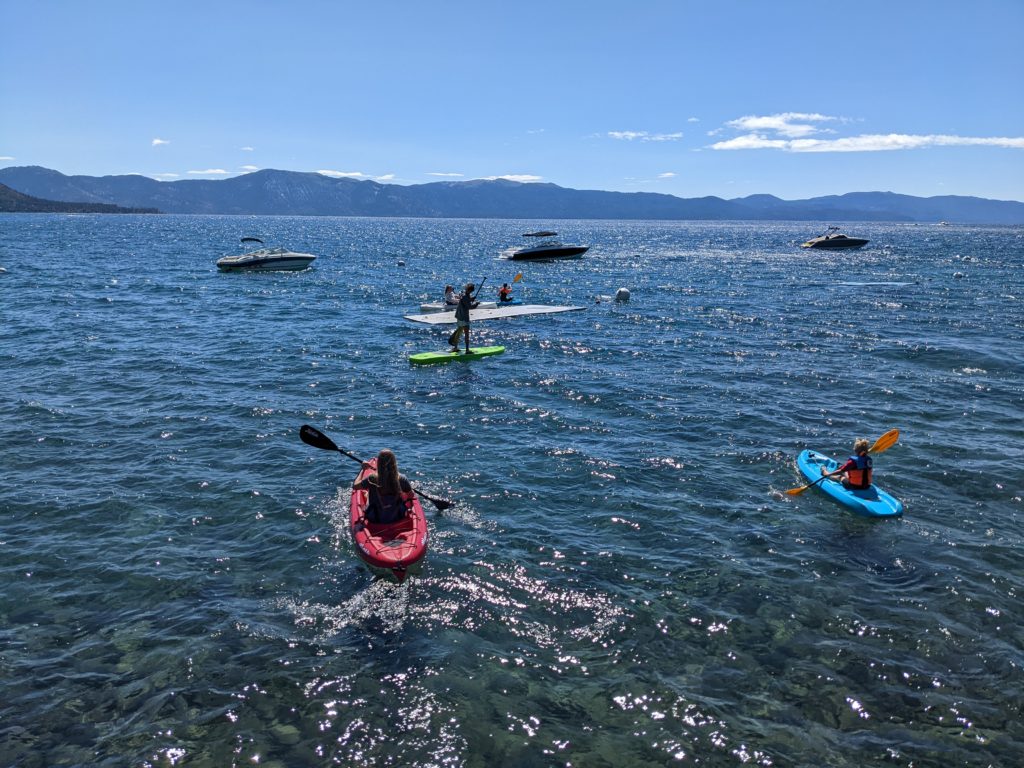
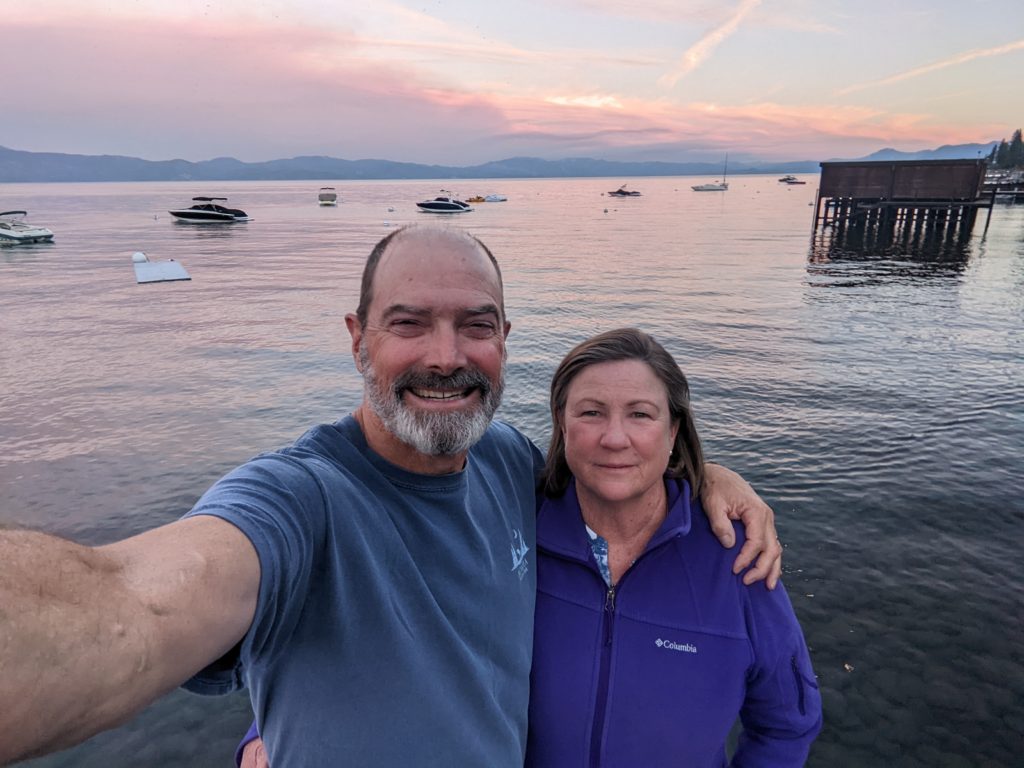
The national forests of California provide a huge recreational playground for those who want to four wheel drive, hike, fish, camp, hunt, boat or explore, depending on your poison. For Julie and I, we wanted to explore the expanded area of northern California that is marked green on the maps and once again enjoy the fabulous outdoors.
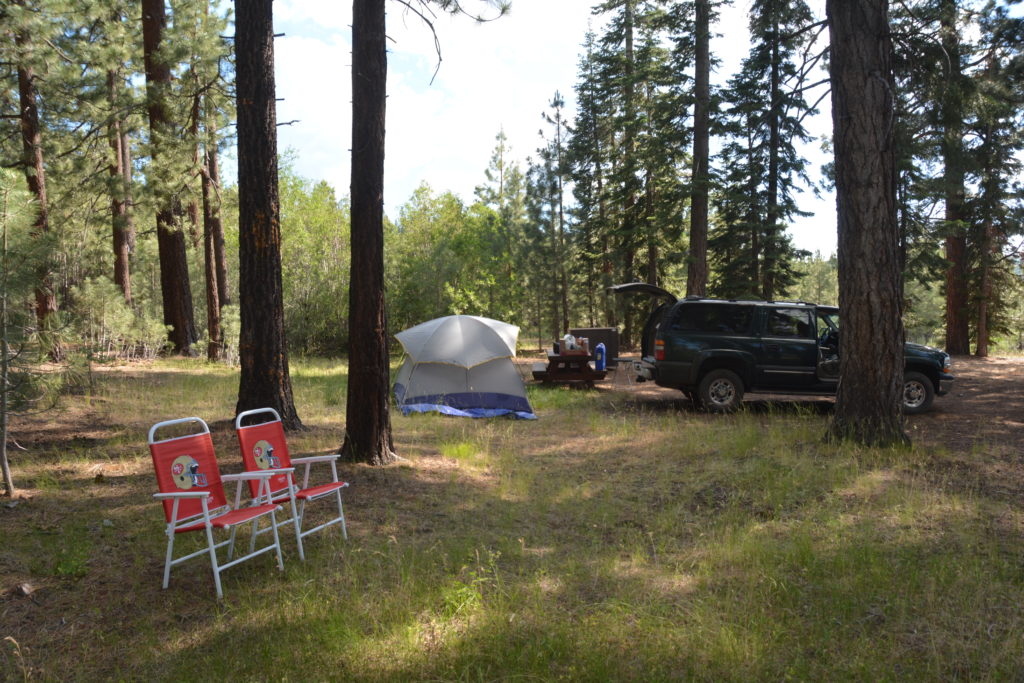
But every paradise has its small print. And in the case of the high mountains of the Sierra Nevada that fine print is either snow, fires or bears. Camping at 6,500 feet (almost 2,000 metres) would mean deep snow in the winter and the risk of fires in the summer. Due to the ongoing California drought we knew fires would always be a risk on this trip. But bears, our fascinating and intimidating companion through Canada and Alaska during the first leg of our Follow the Sun journey in 2017, were back.
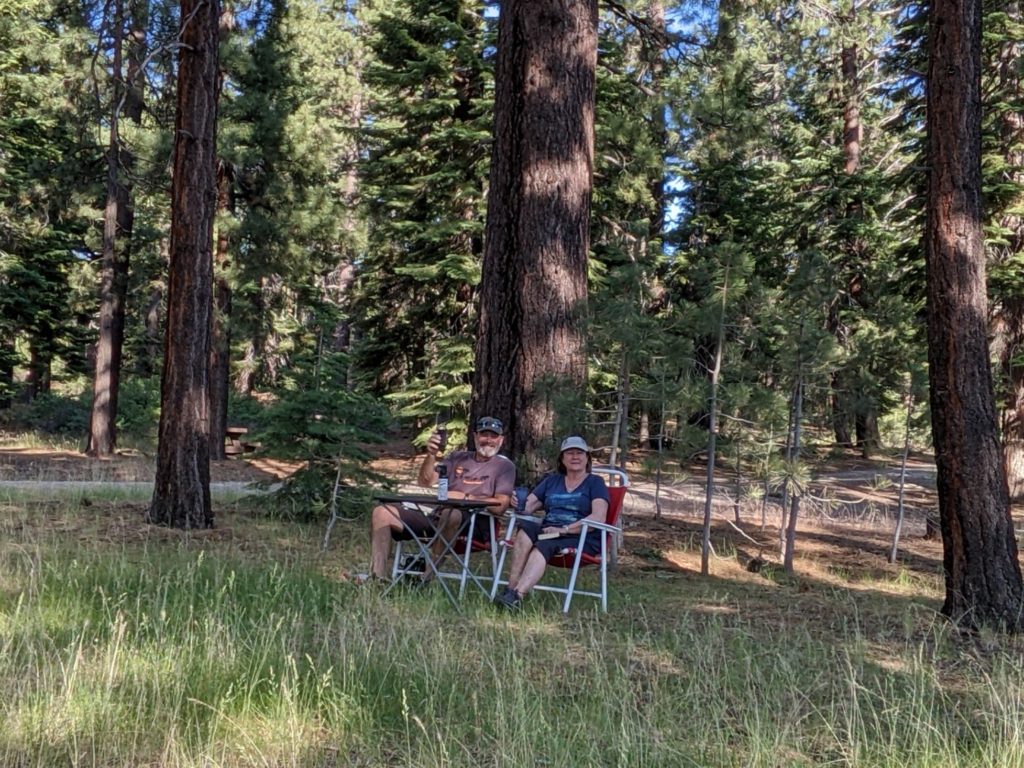
As dusk settled to dark we began to hear a bear growling loudly just outside the perimeter of the camp. This was enough to move our bedding from our vulnerable tent into the back of our truck and sleep the night there. We had bought bear spray and were well prepared, having put all our food in bear-proof boxes, but bears are bears and nearby bears deserve additional respect.
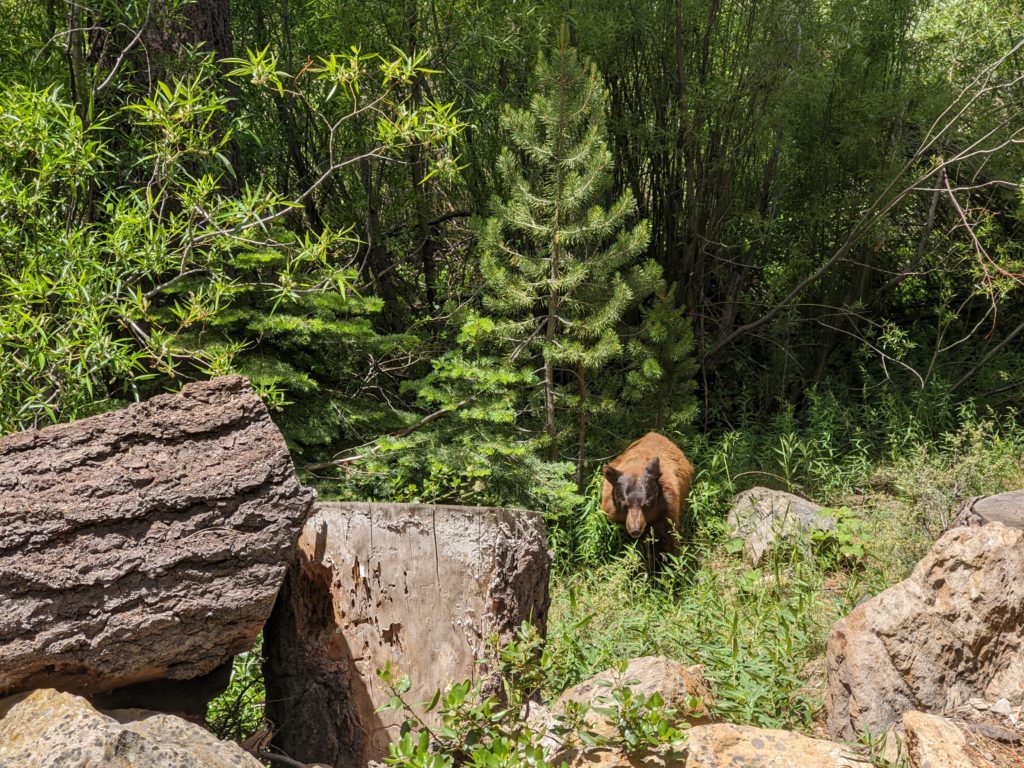
The third member of our travel team is the family’s 20 year old Chevrolet Suburban, rugged, well-tested and reliable, if perhaps lacking in some creature comforts. Never mind, the next day it confidently took us through the national forest to Sierraville and further north through quiet little communities and more beautiful pine forests to Quincy.
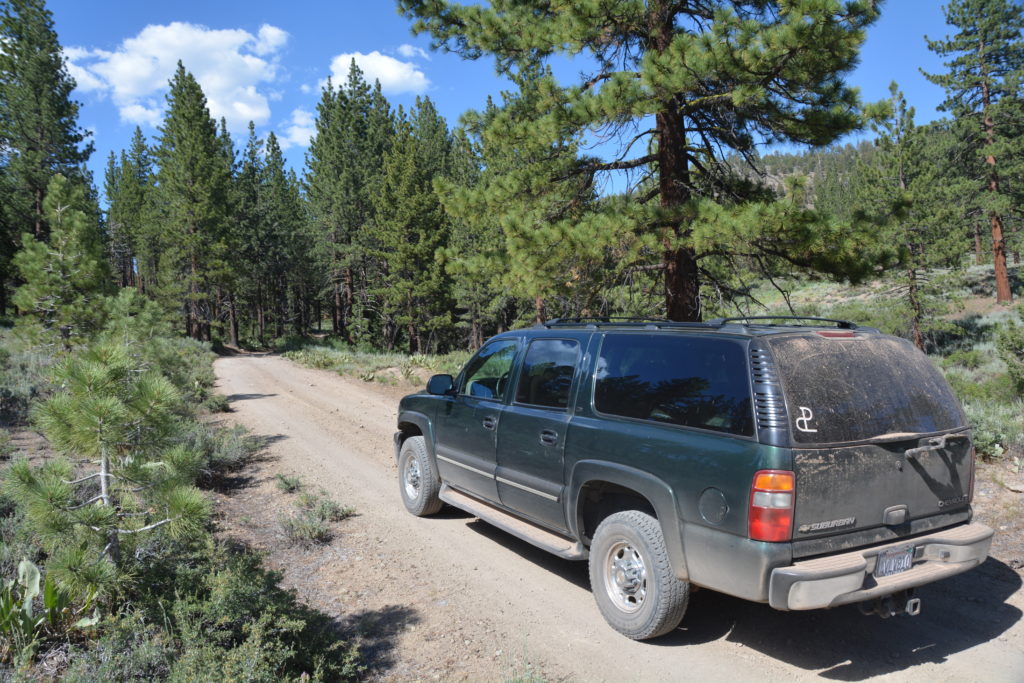
North of Quincy the devastating effects of the massive Dixie fire in 2021 were on display across every mountain slope, vast tracks of beautiful pine forests burned to the ground, sometimes just a moonscape left behind. We drove through the town of Greenville, now with only a couple of buildings still standing while all that was left elsewhere were barren foundations.
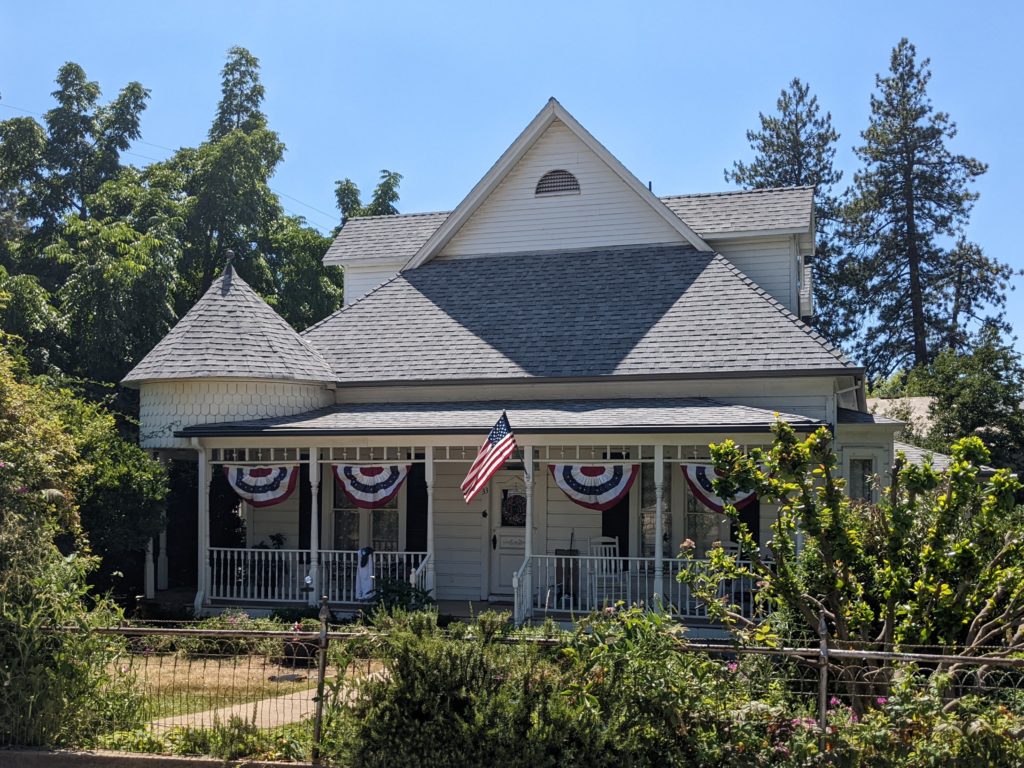
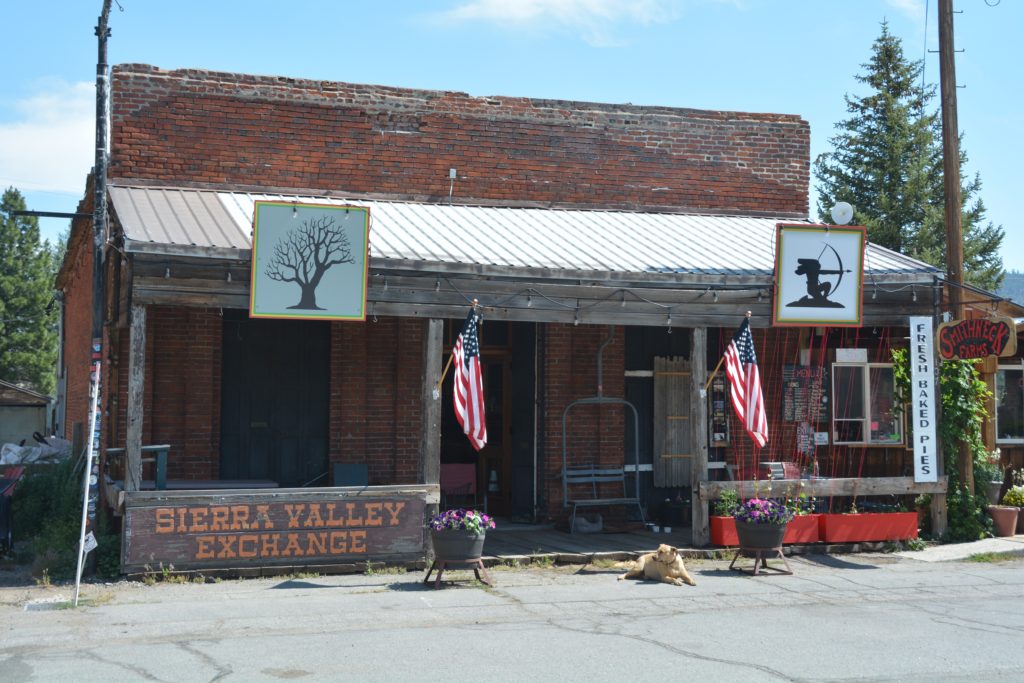
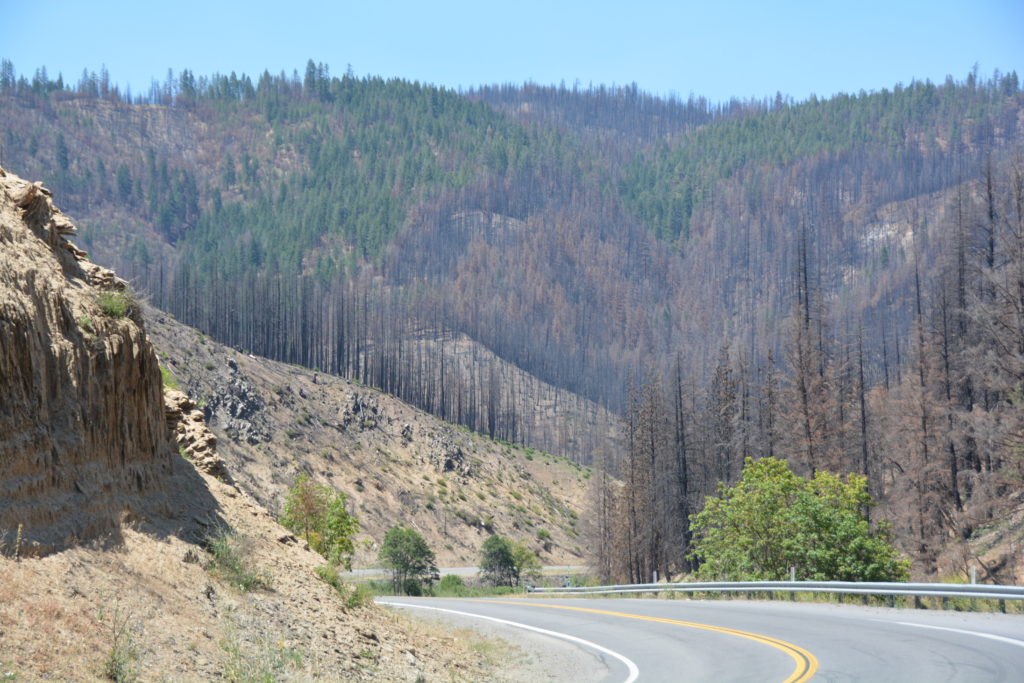
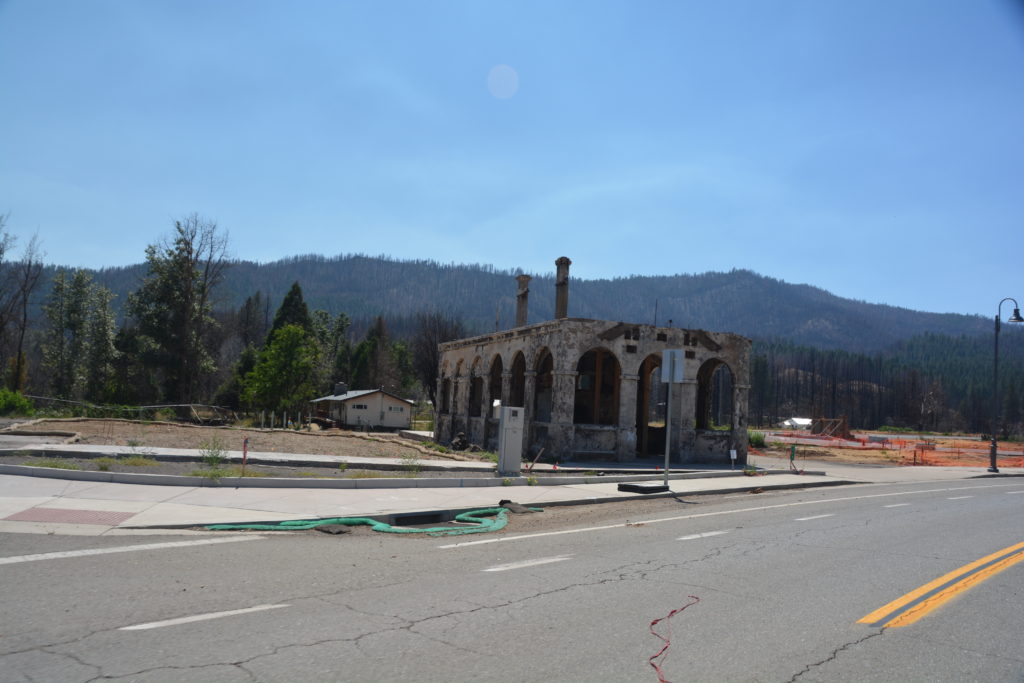
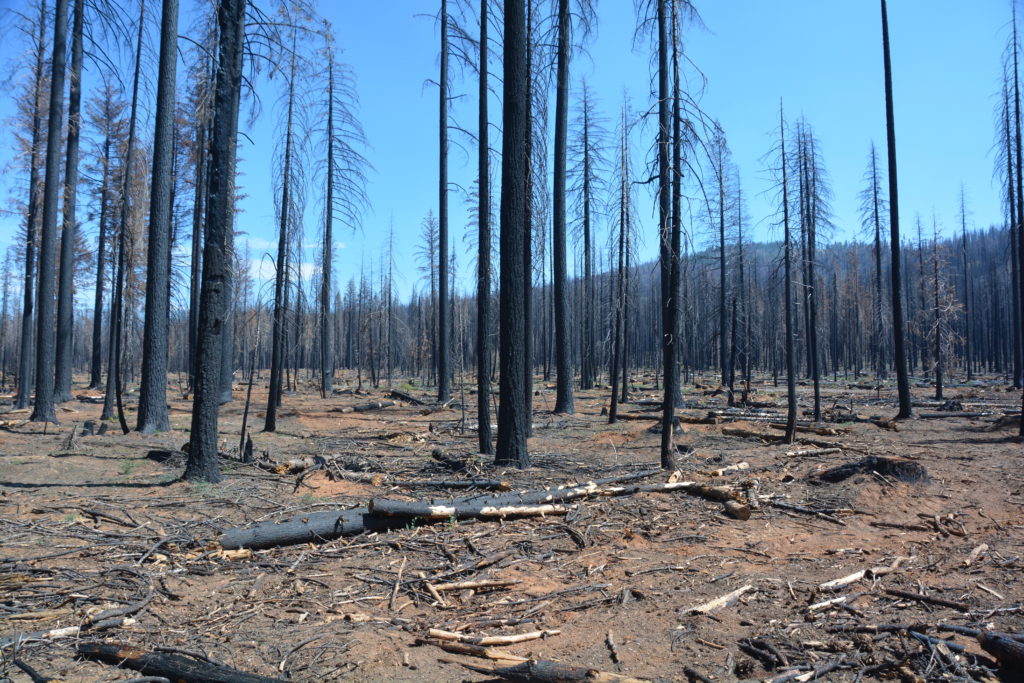
At Lake Almanor we followed the east coast of this huge lake, admiring the million dollar homes and quaint little cabins mixed side by side along the lake’s shores, the whole scene very reminiscent of Lake Tahoe. Most of the forest nearby was blackened but the communities along the lake were thankfully spared.

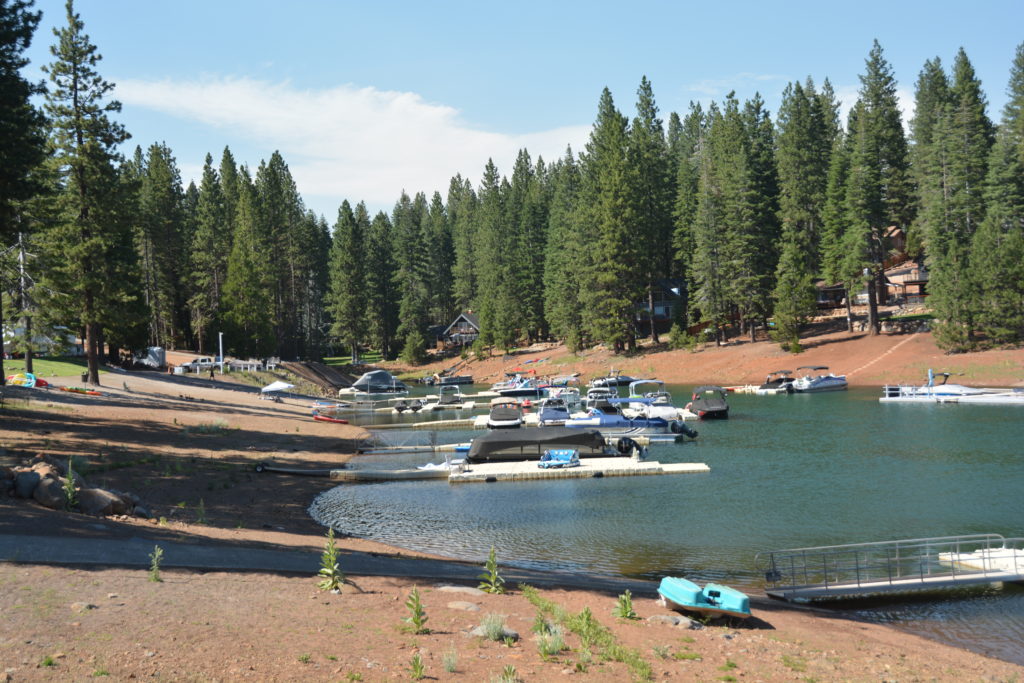
We camped that night on the edge of Wilson Lake, deep in Lassen National Forest, a mix of burned and green trees around us, bird life flourishing on the little lake. The full moon came up over the lake and cast a wonderous spell on the scene. And best of all, no bears bothered us all night. Another paradise found.
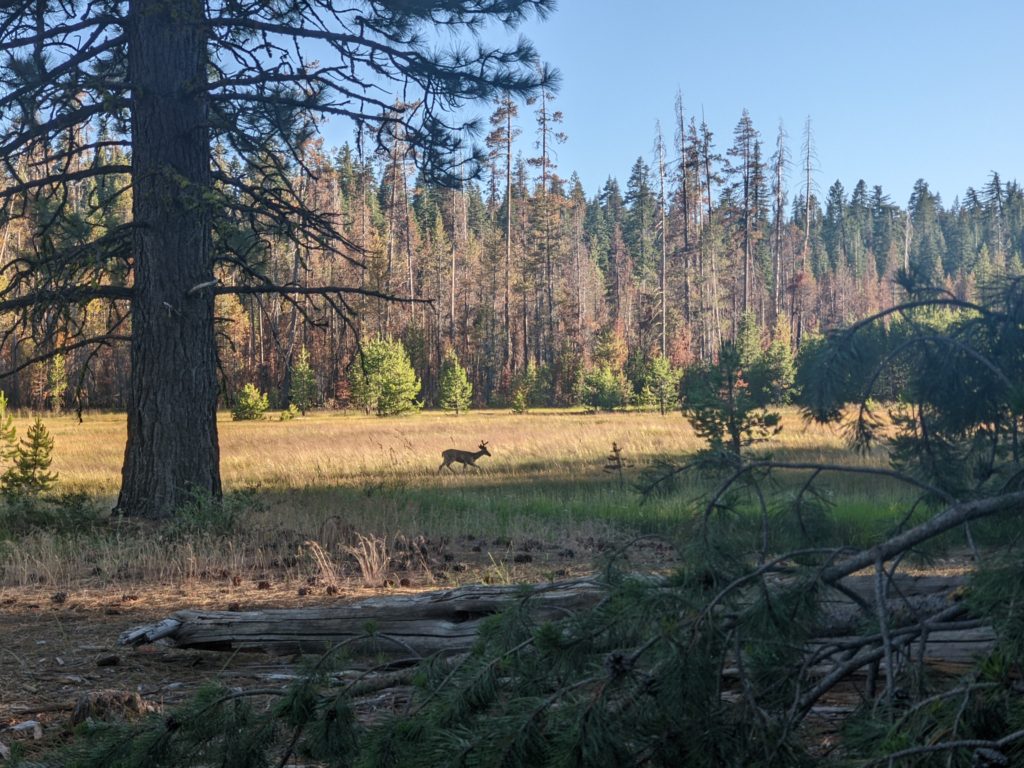
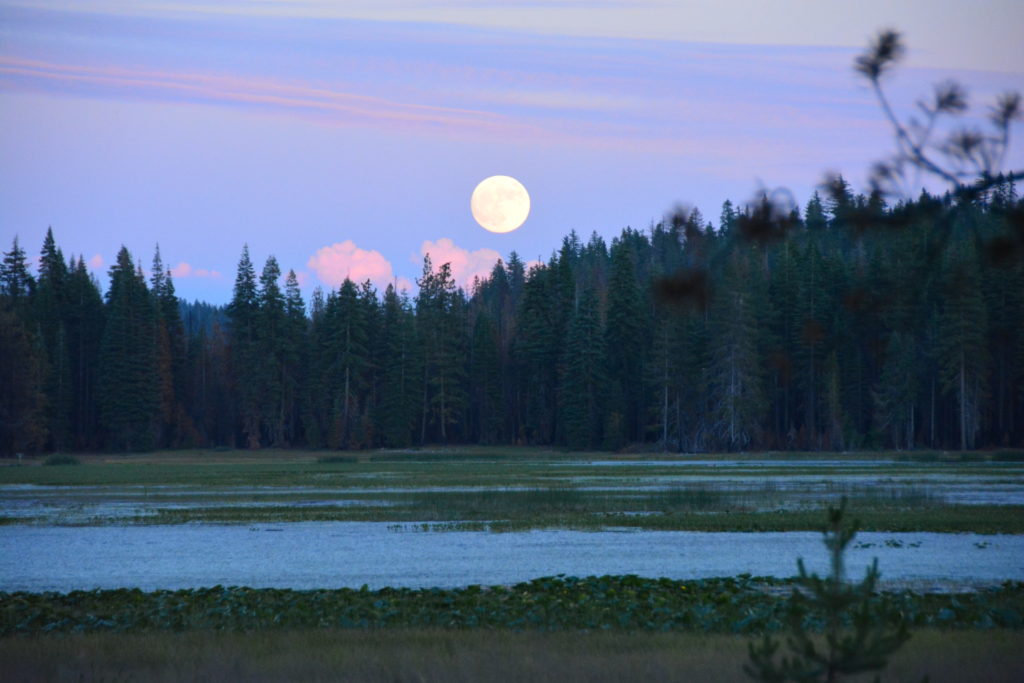
Lassen Volcanic National Park features the most diverse and interesting volcanic activity in California. We are heavily into volcanos, especially after our recent time in Iceland, and couldn’t wait to revisit this park which we had first seen in 2017 during the first leg of Follow the Sun.
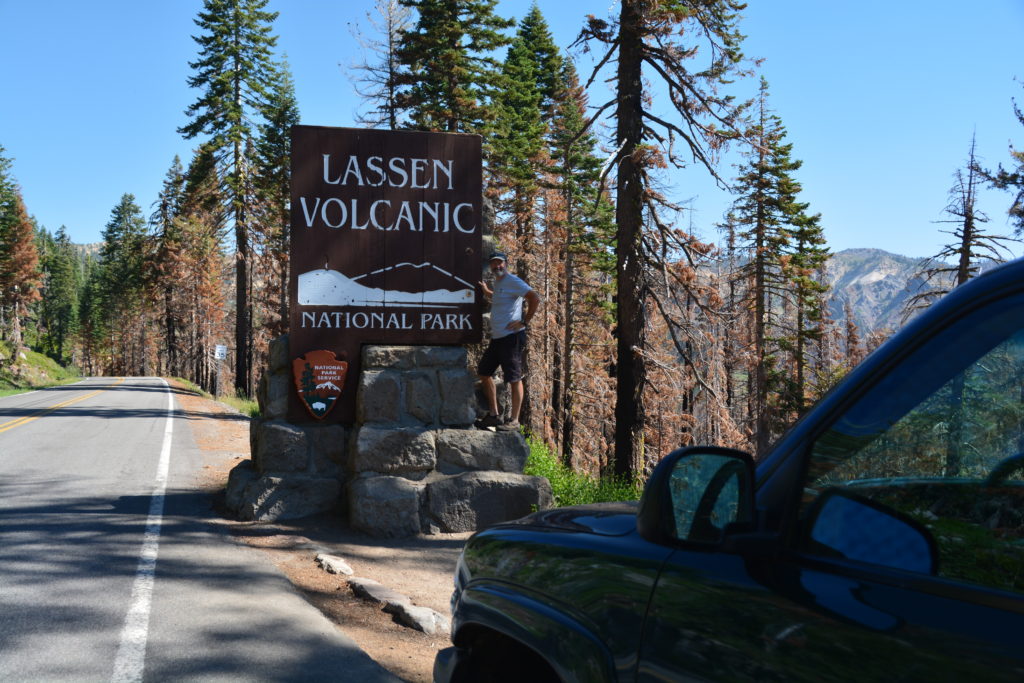
We spent the day driving through the park, learning all about it’s volcanic features. The massive Dixie Fire had reached well into the park and obliterated large tracks of our beloved pine trees. Nevertheless, the park sparkled with mountain beauty.
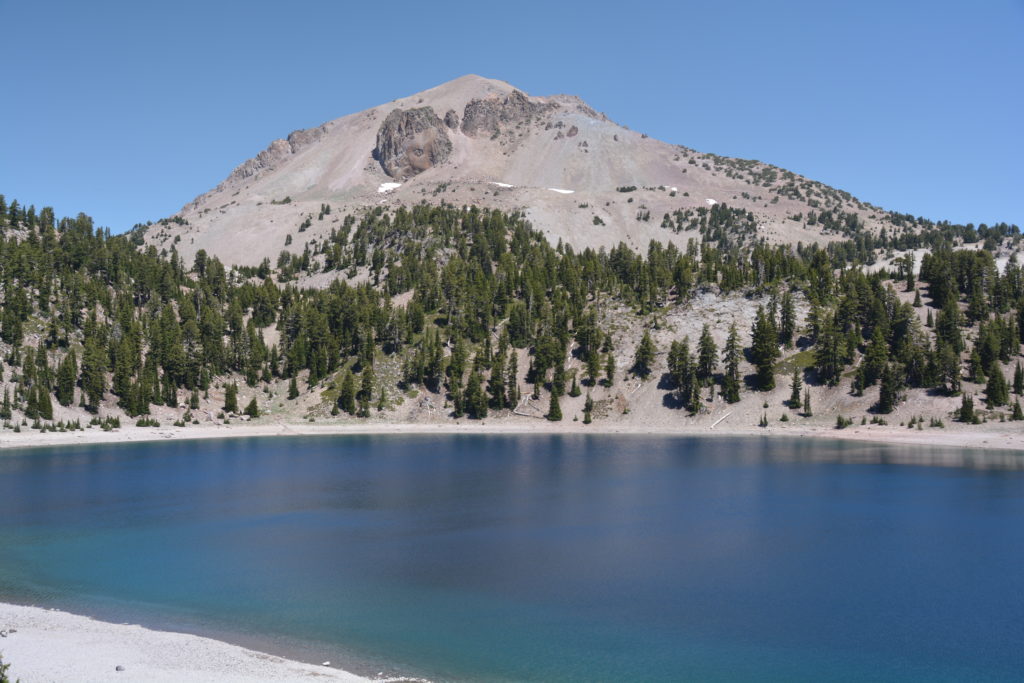
Fun fact: Lassen National Park is one of the few places in the world where all four types of volcanos can be found. Despite the 95°F (35°C) temperature we opted to do the 4.8 km (3 mile) Bumpass Hell walk back to a 14 acre area featuring multiple hot bubbling springs, bubbly mud baths, steaming fumaroles and colourful rocks and soil from the sulphur, acids and other crazy stuff that happens there.
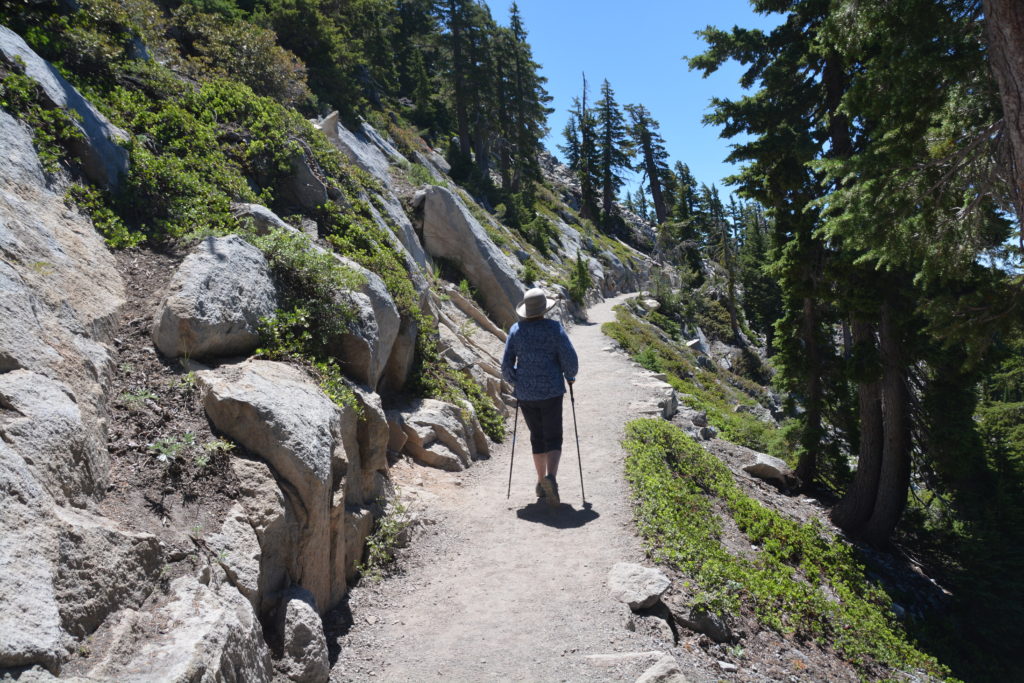
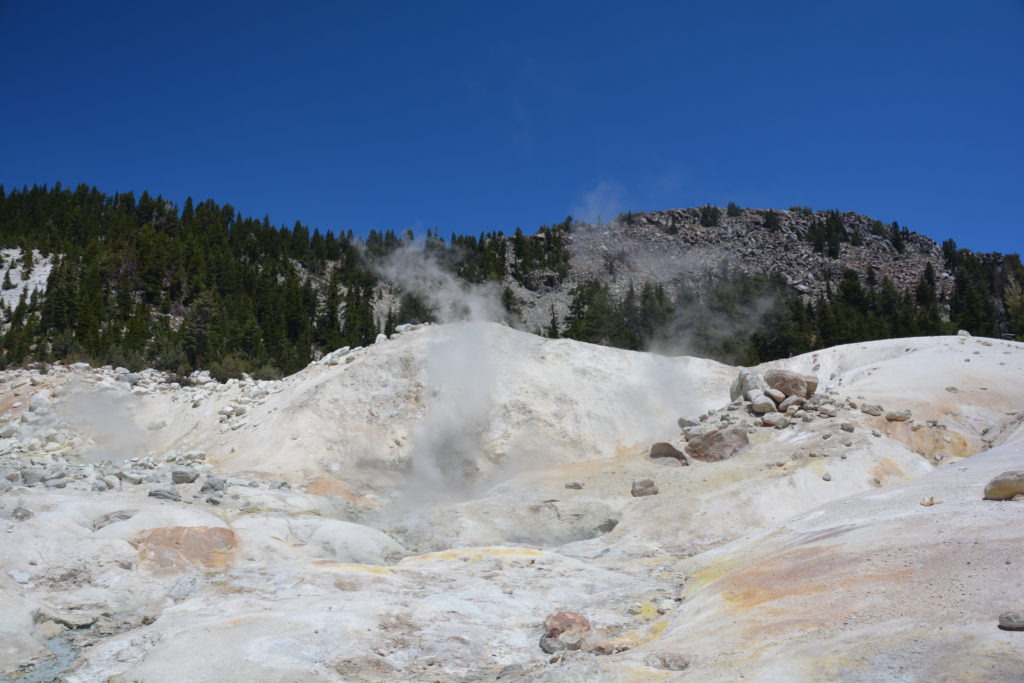
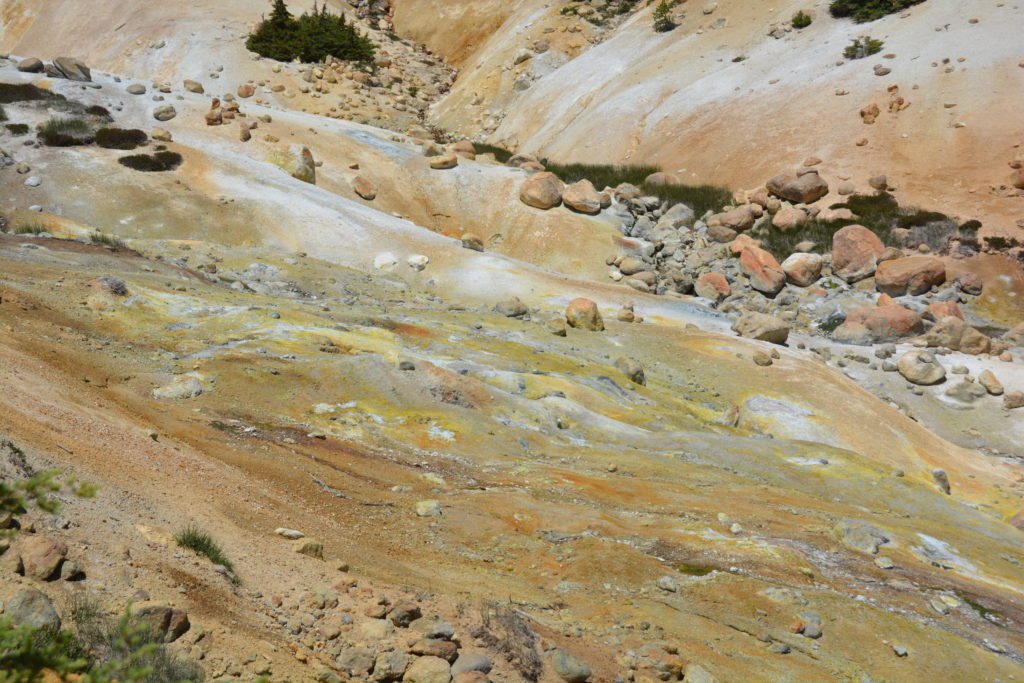
Having driven around numerous crystal-clear glacial lakes, the towering Mt. Lassen itself, still patched with snow, and over a pass of 8,511 feet (2750 metres, much higher than Mt. Kosciusko), we camped for the night at a park campground on pretty Manzanita Lake. It had been a fabulous day celebrating volcanos and one of California’s best national parks.
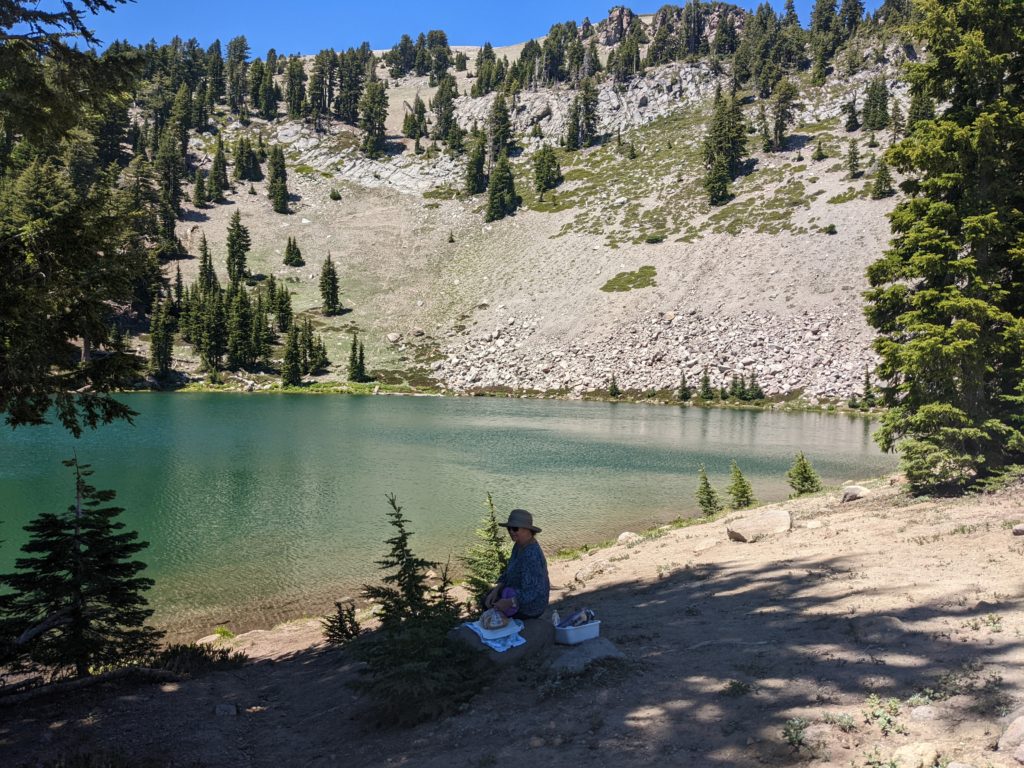
We have learned that pine trees come in many different versions, all with unique bark, branch and needle configurations. And as we moved north they continued to change with more ponderosa pines and juniper pines peppering the mountain slopes, along with many other varieties. To be honest, the different pine trees were all a bit much to keep straight.
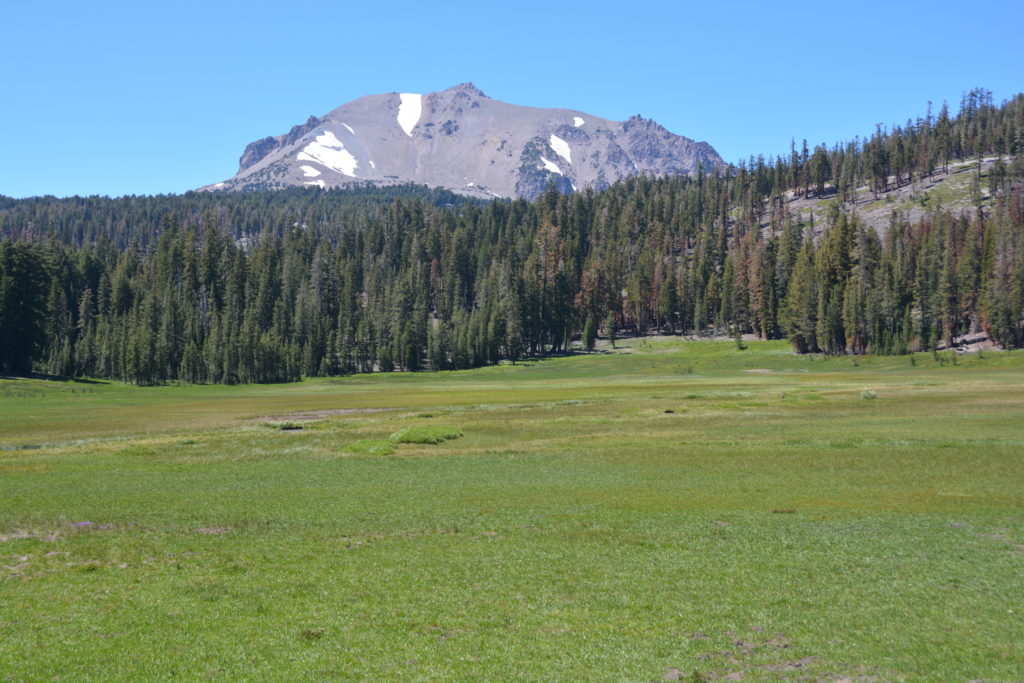
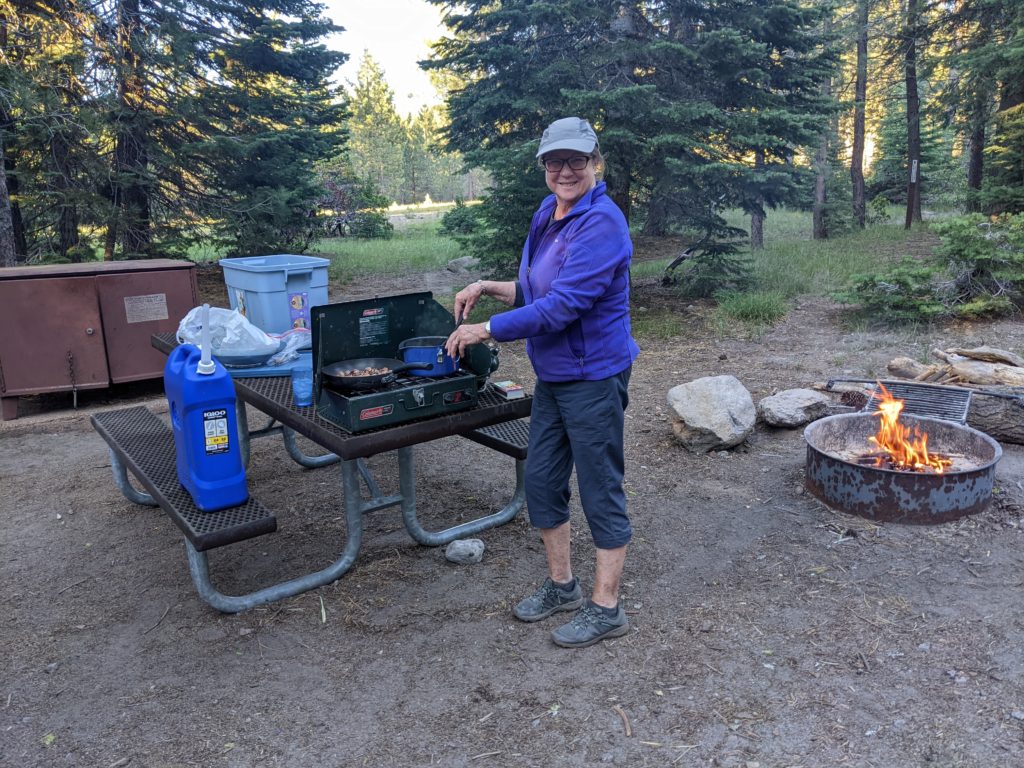
In keeping with the volcano theme, and why not, our next target was the huge Lava Beds National Monument, tucked into the remote north-eastern corner of California. To get there we followed a series of roads, stopping at some very cool lava tubes and a lava ice cave, before the dirt track ended and the Lava Beds National Monument began.
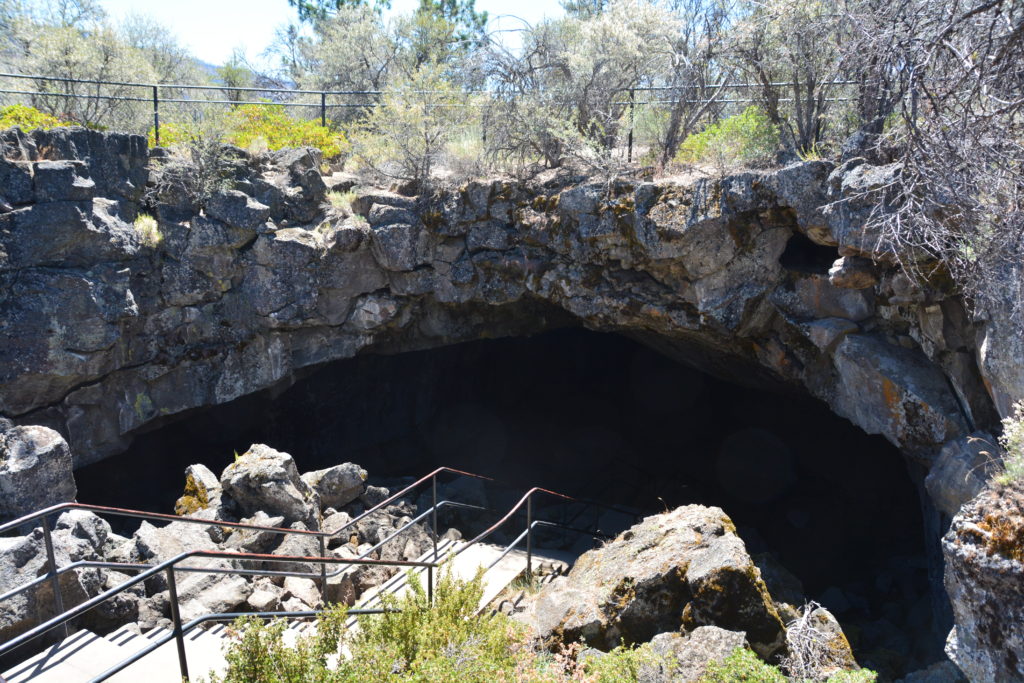
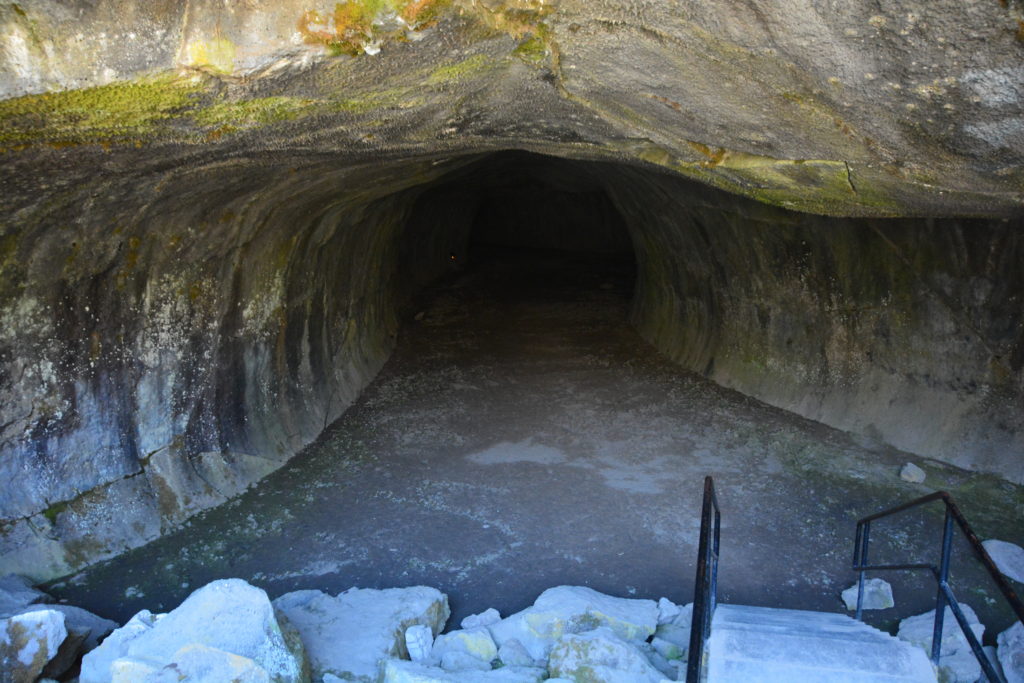
This is the unheralded and under-visited corner of California, far away from the long sandy beaches, glitzy Hollywood and pricey Silicon Valley. During a day of continuous pine forests we basically went through no towns over 200 people and passed the imposing Mt. Shasta, permanently topped in snow, standing proudly at over 14,100 feet (4270 metres). We camped in the basic campground in the park, a hot dry desert wind making us hug the shade.
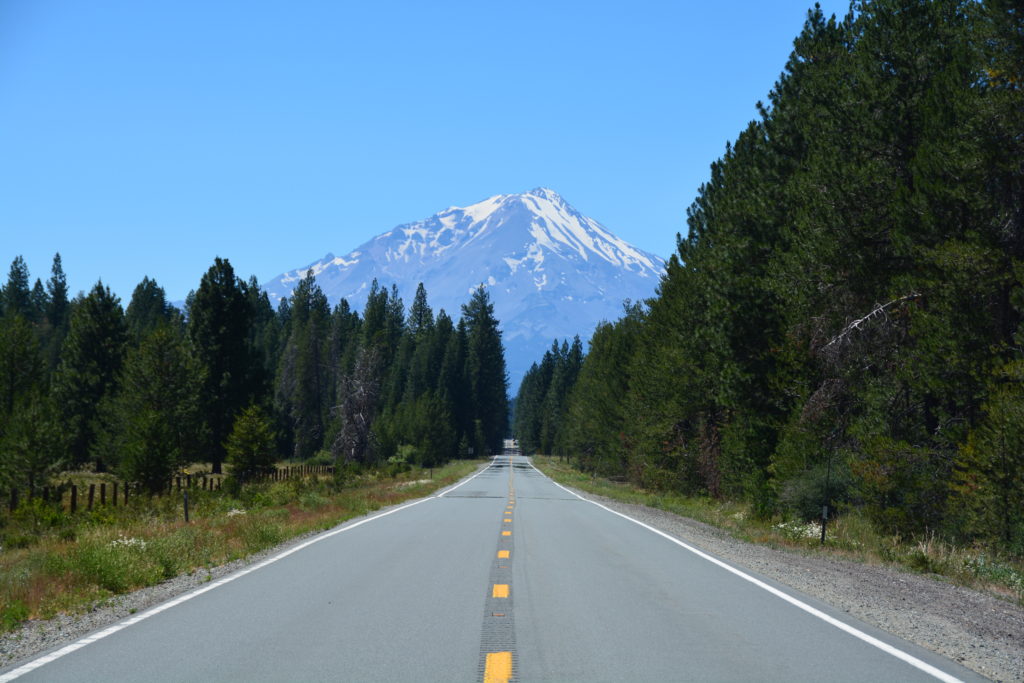

Stricken by recent fires and a years-long drought, this is a brutal and forsaken land, lava beds blunting any growth, skeletons of tree, only dead brown grass where it once grew. But this corner of California features some of the most extensive and best lava tube caves in the world – over 500 of them by one count. If you pine for lava tube caves, book your flight.
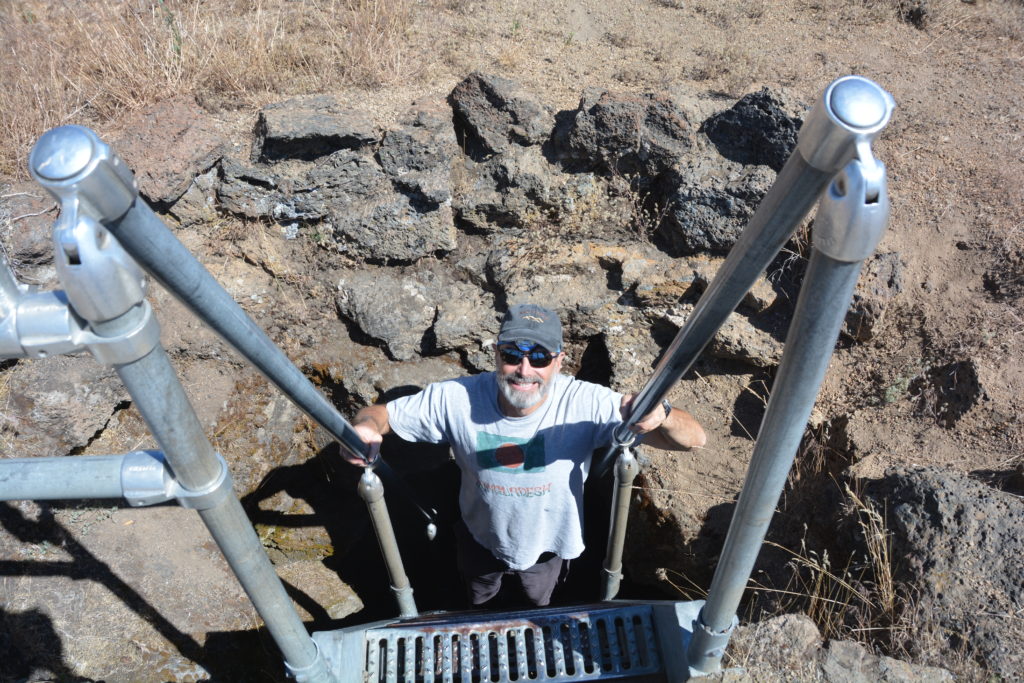
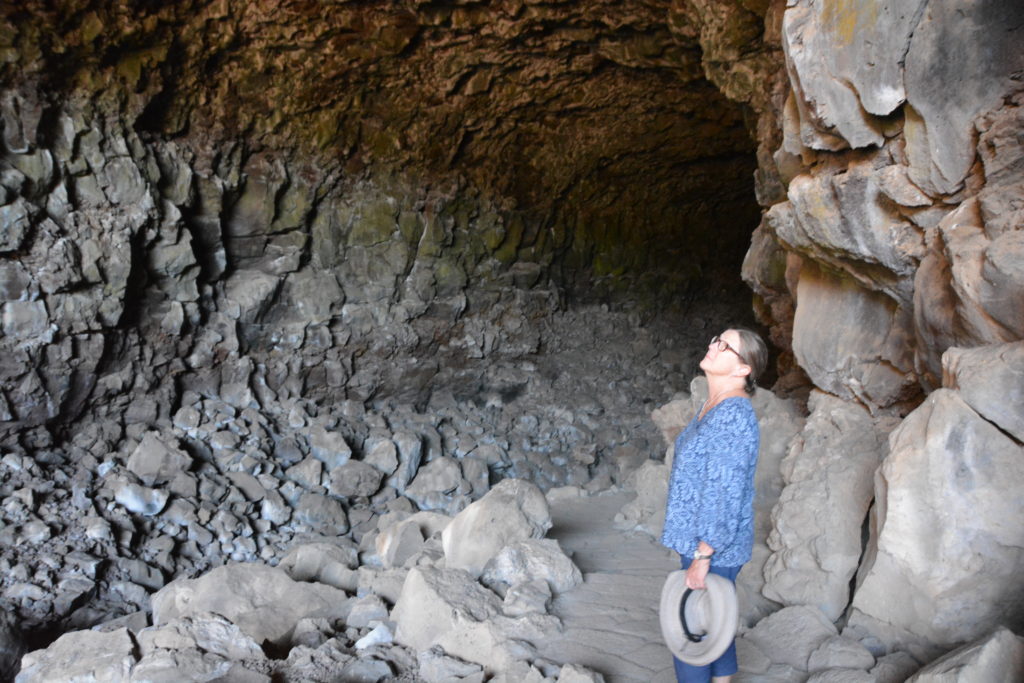
Lava tube caves are basically formed when hot lava flows down the contours of the land and then cools on the top while continuing to flow underneath. Eventually the flowing lava runs out and it leaves an amazing cave, sometimes many thousands of feet (a kilometre or two) long.
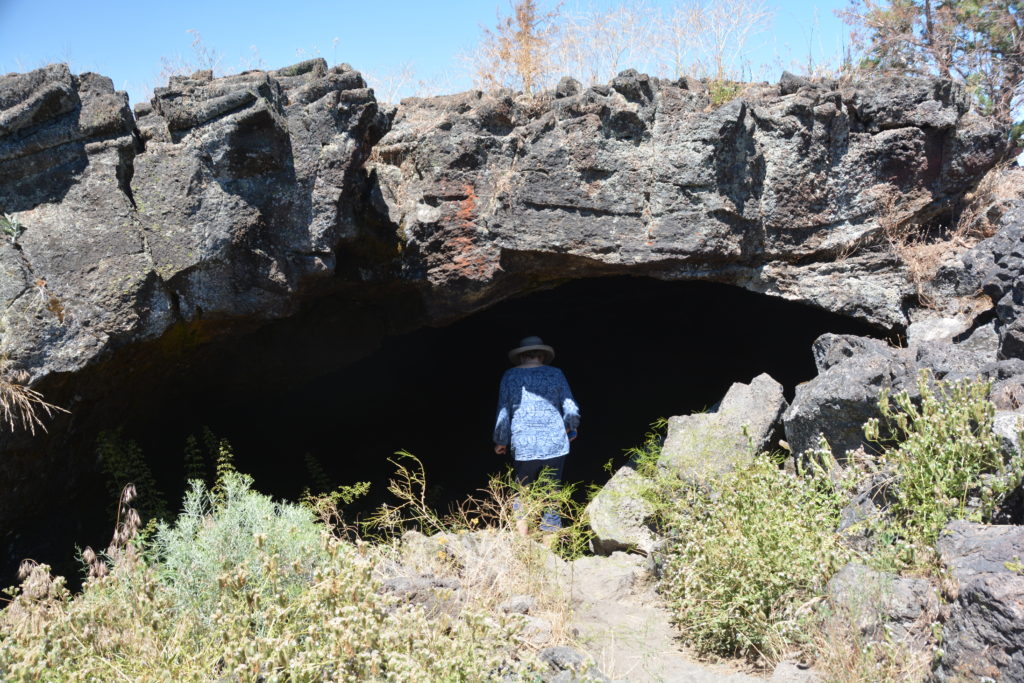
In this case, the lava eruption flowed down these slopes about 30,000 years ago, more or less, and created hundreds of caves, some of them layered on top of each other, many crisscrossing each other, some interconnected. One huge cave dove straight down so far it’s moisture froze over into huge sheets of ice, others played figure 8 games or continually split into an endless underground labyrinth.
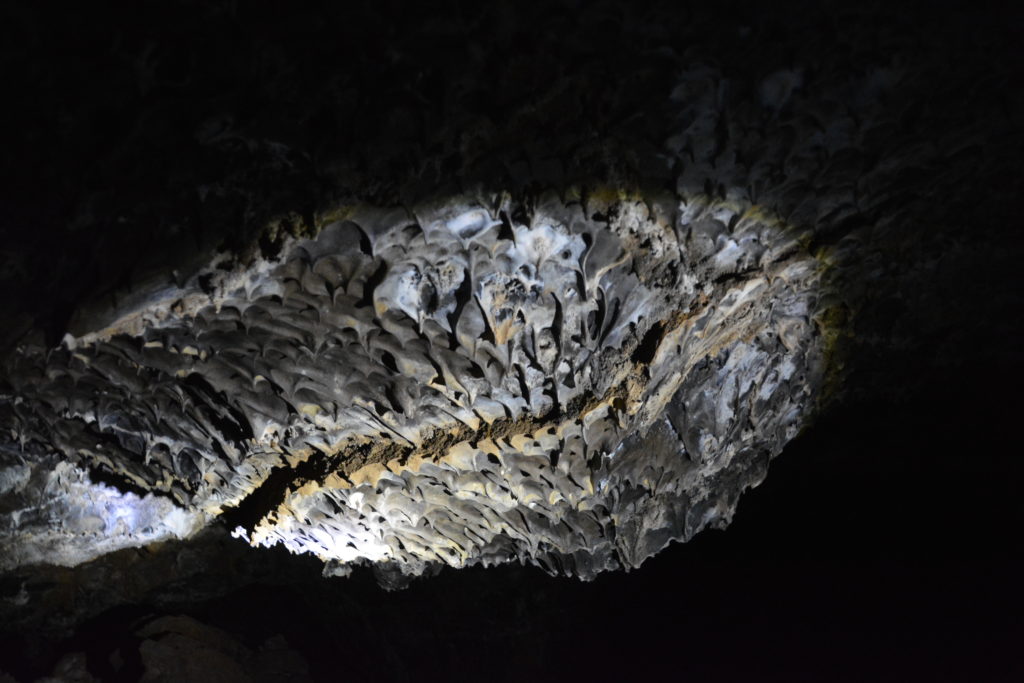
Julie and I explored about 12 of these lava tube caves, most of them showing off unique features or configurations, all of them blissfully cool after the scorching mid 90°F/mid 30°C temperatures up above. We often had to check ourselves on the way out to make sure we followed the same path lest we get lost down there. It was hugely fun, absolutely fascinating and a great novel act in volcanic activity. We were mowed down and melted away but loved it.
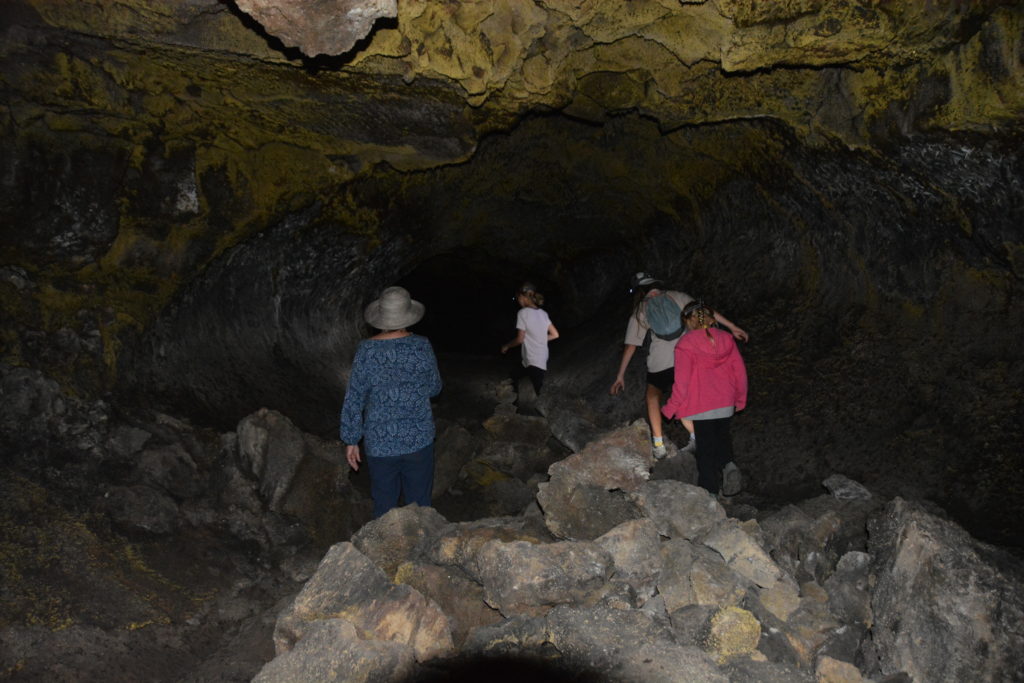
We headed north out of the park, briefly stopping to see the ancient petroglyphs etched by the Modoc Indians before they were forced from these lands, and reached the furthest nether regions of California when we hit the hot and dusty town of Tulelake (home of the Honkers!).
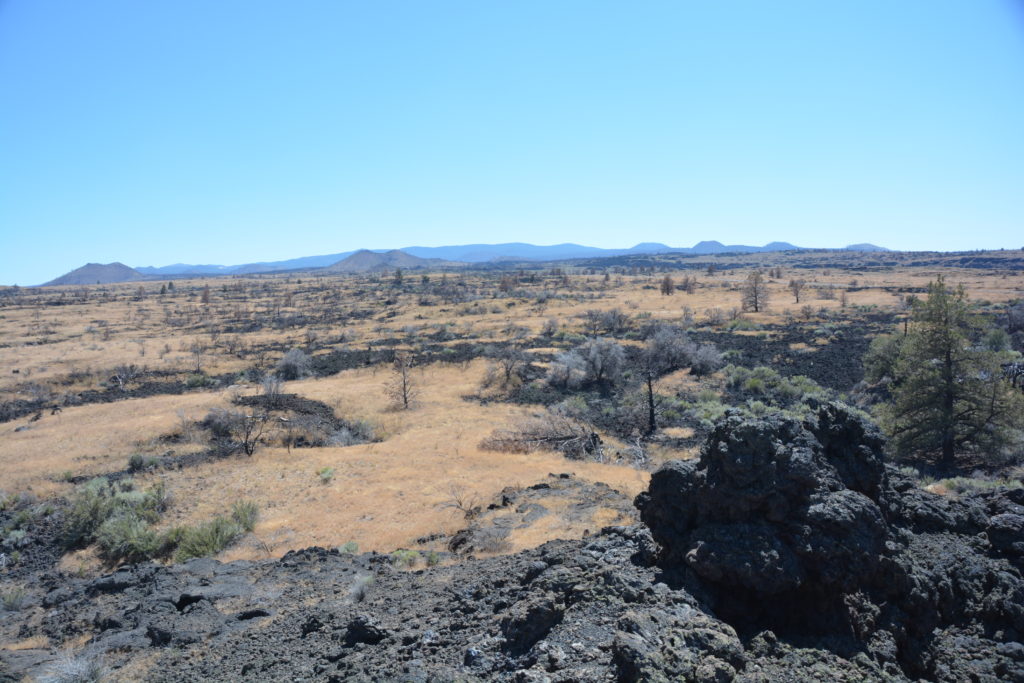
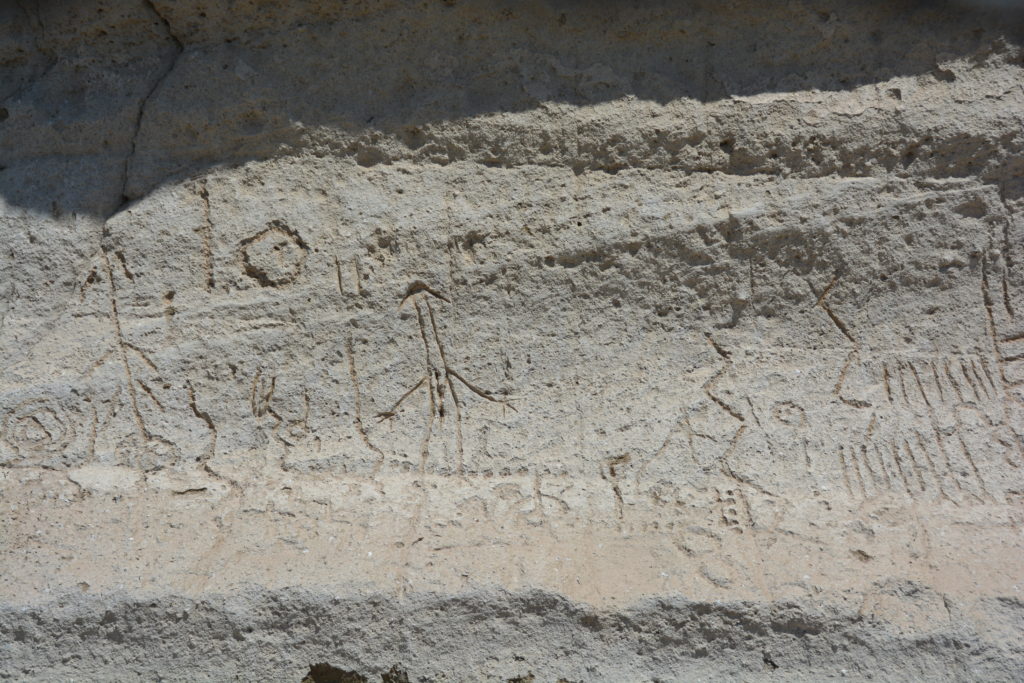
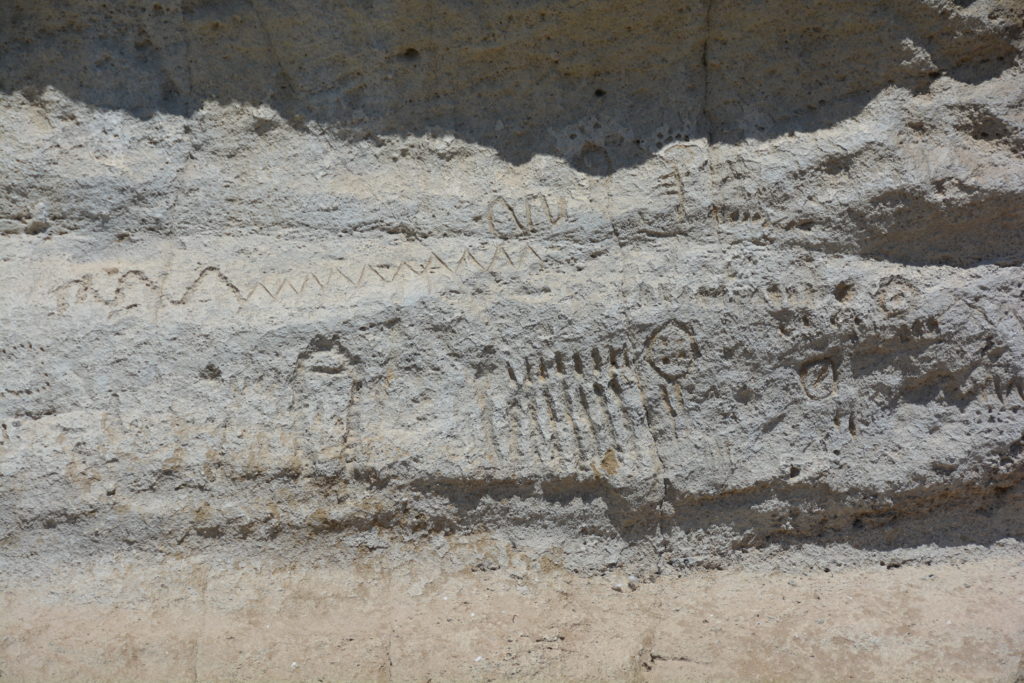
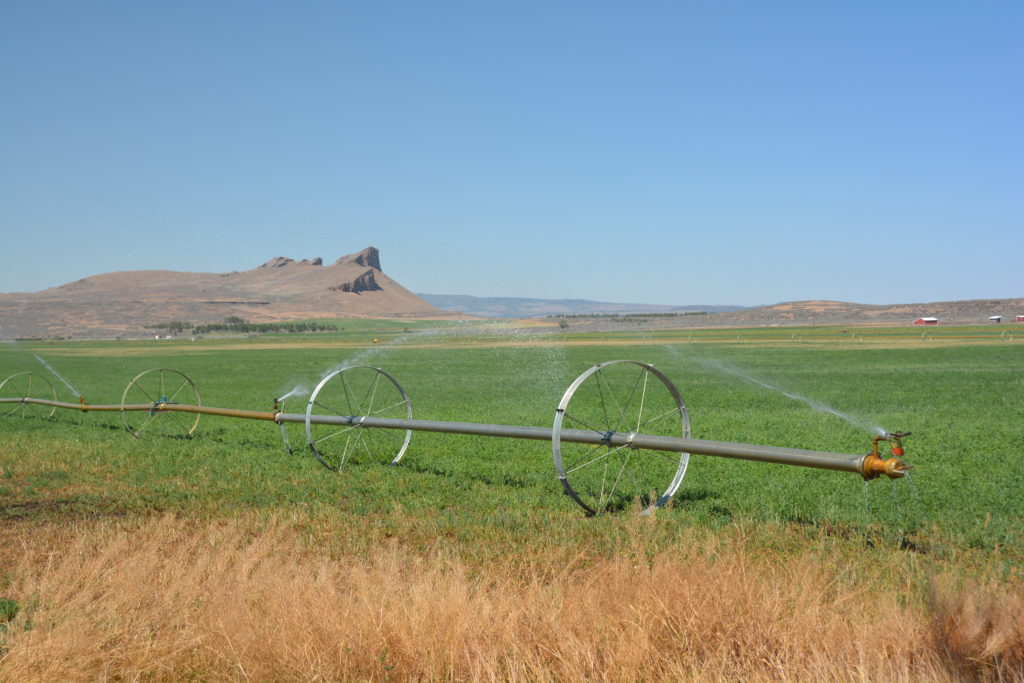
After a life-saving milkshake and other essential supplies, and having enjoyed and survived the cultural experience of Tulelake, we headed west along the California-Oregon border, then south, finally camping the night amongst the pine trees, where else, in Klamath National Forest. Phew!
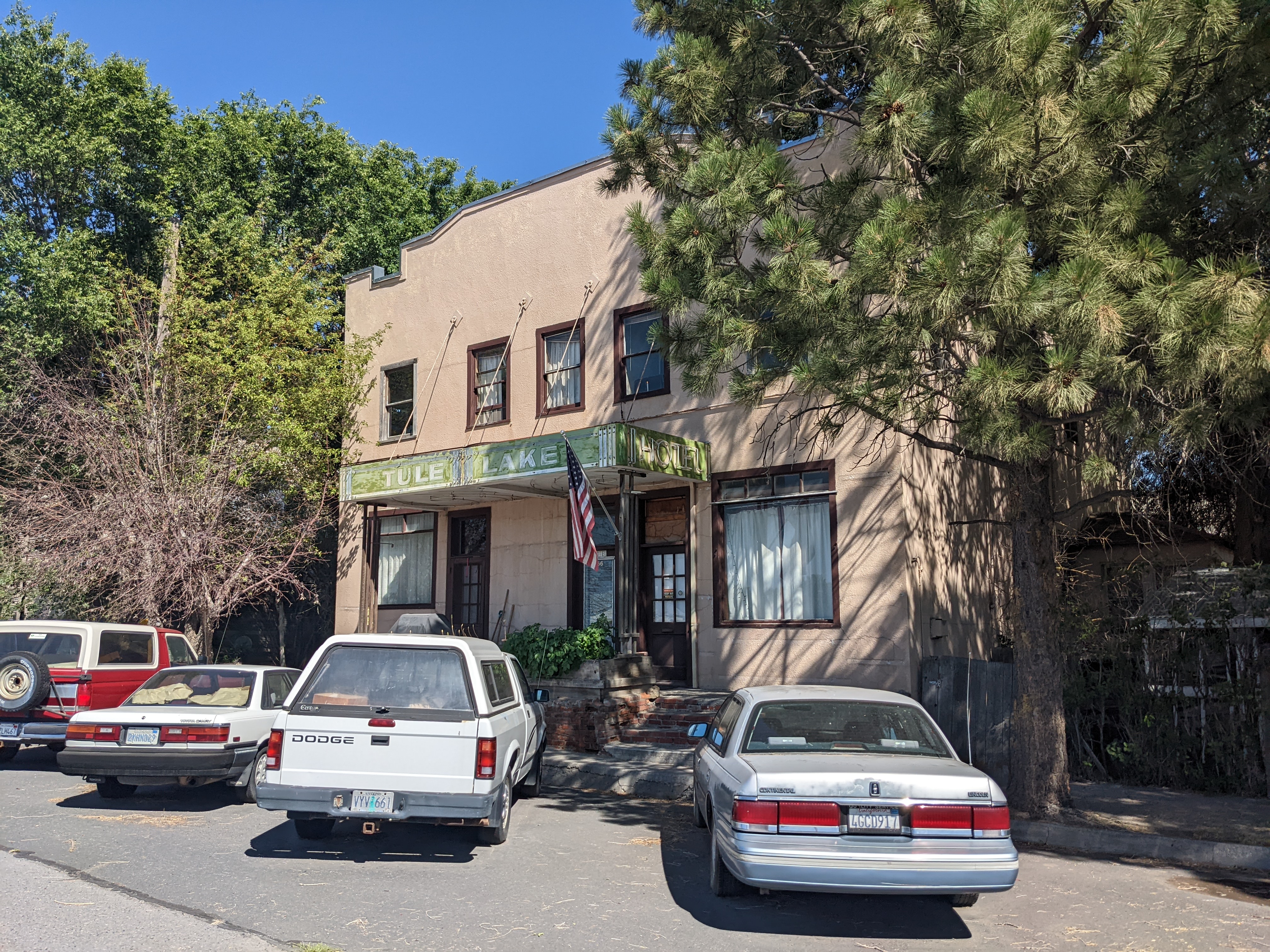
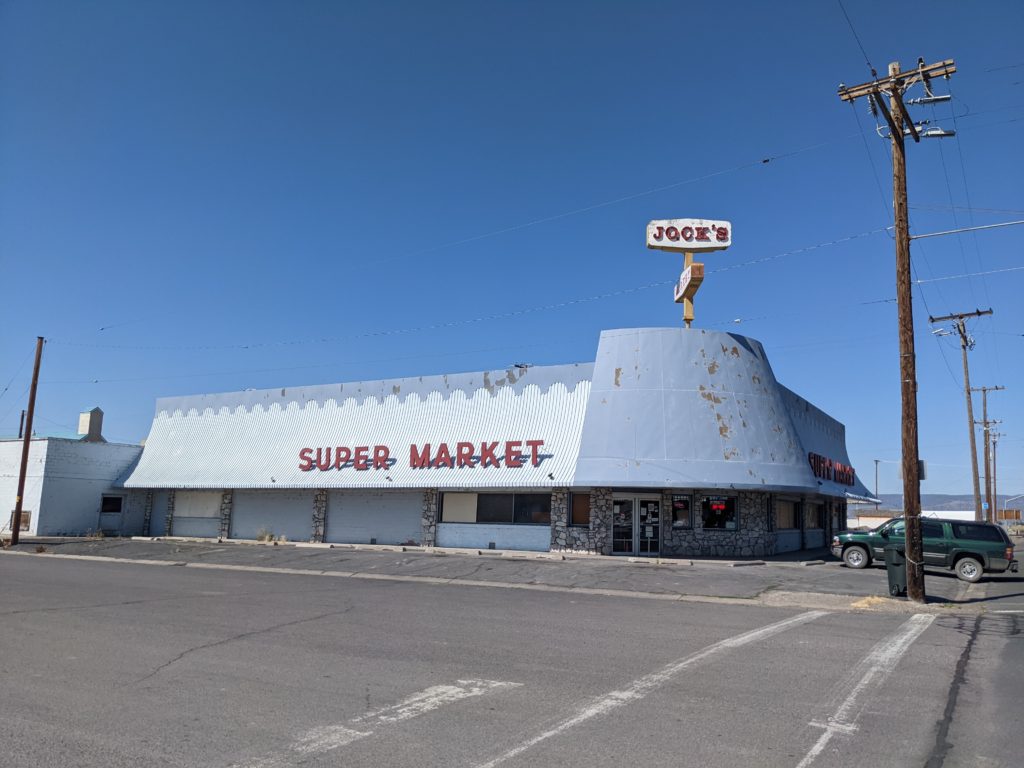
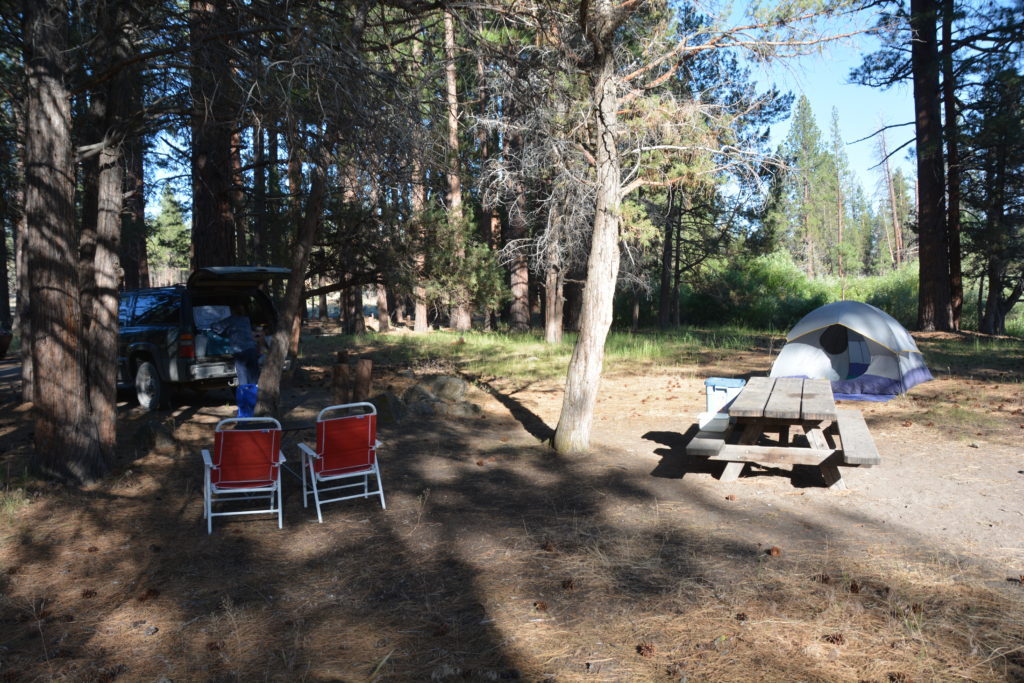
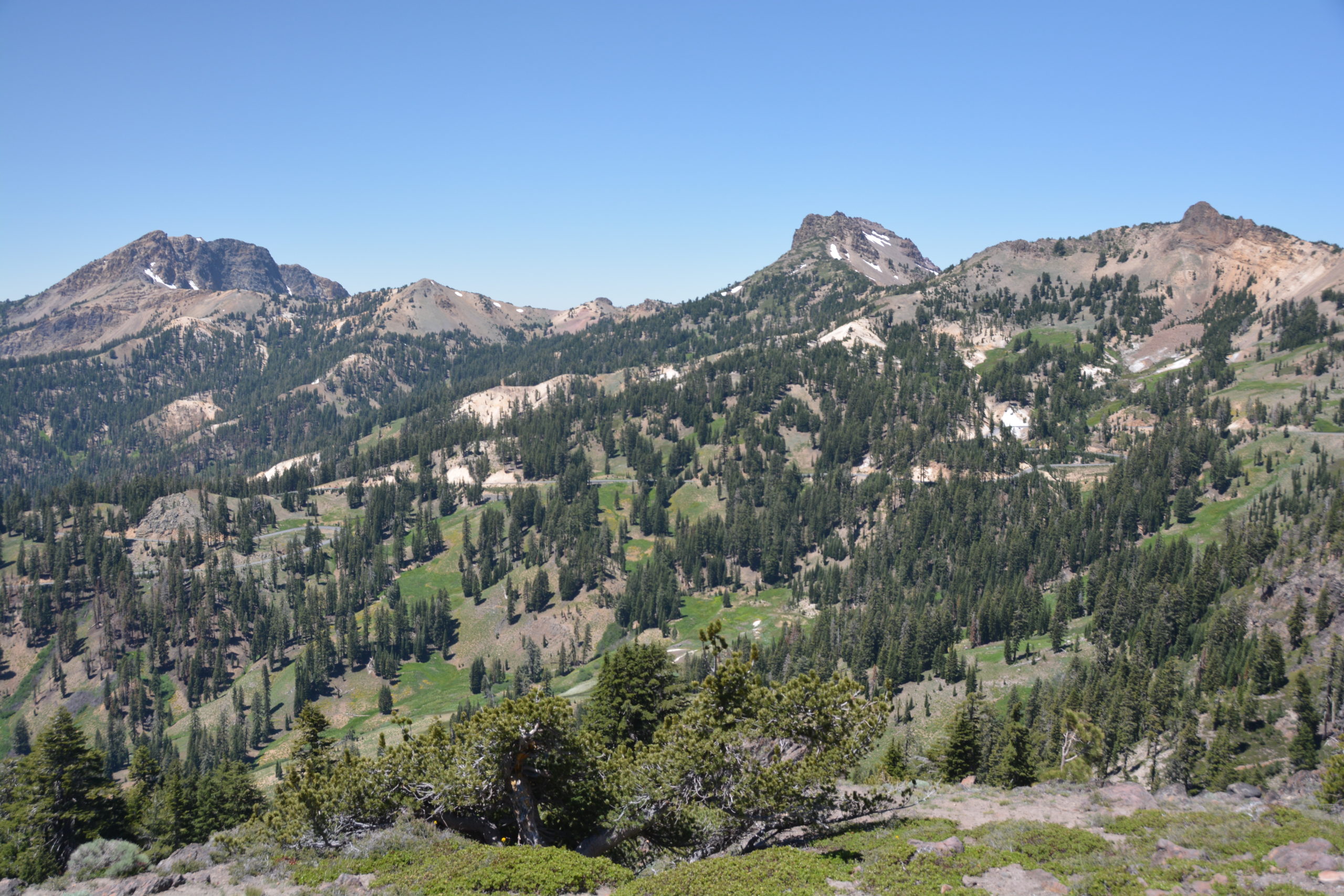
It must be wonderful to explore the lava tunnels
Hi Louise, yes, the lava tubes were amazing and there were hundreds of them. We couldn’t get enough of them and the whole volcanic scene. Absolutely great stuff! Cheers, Bill